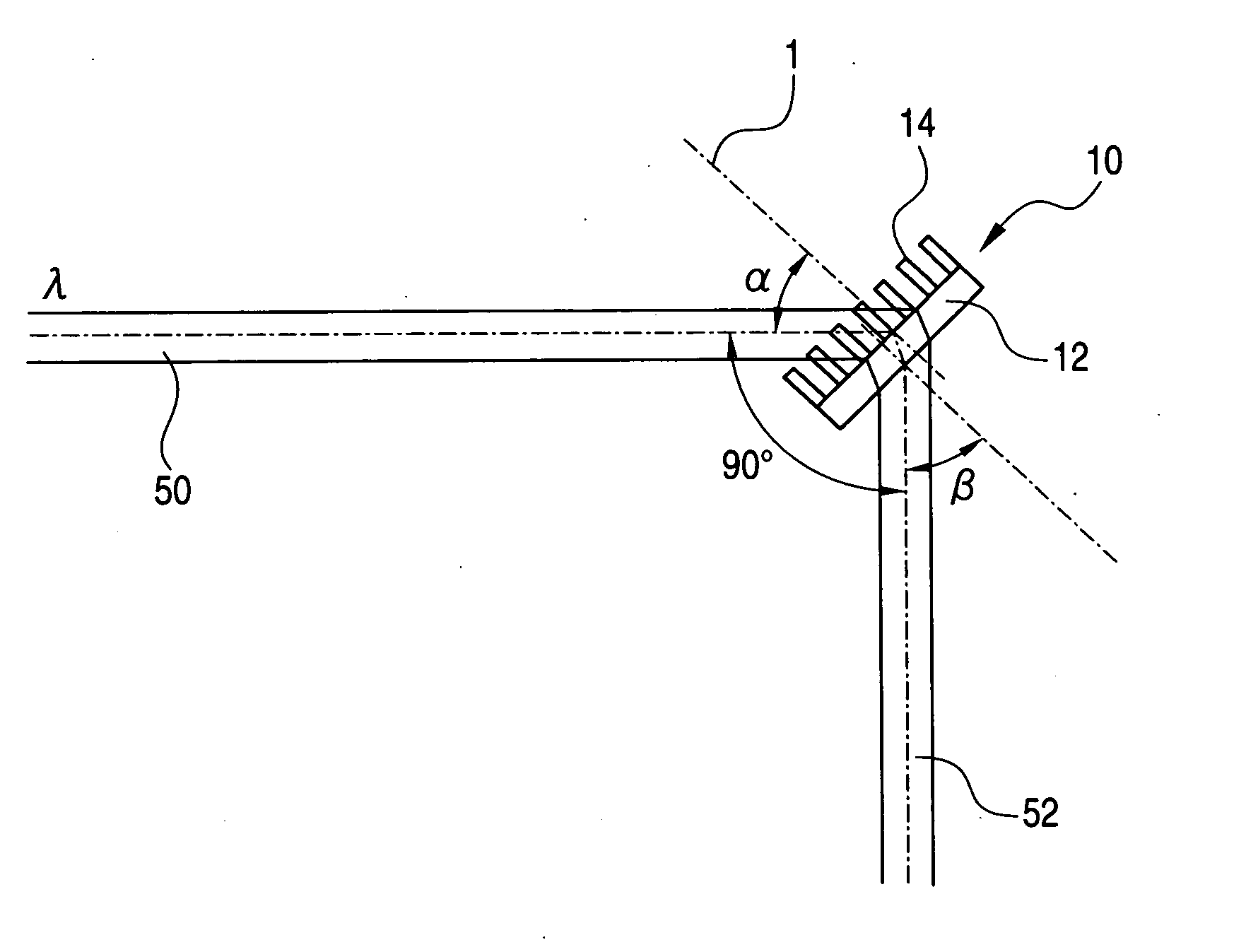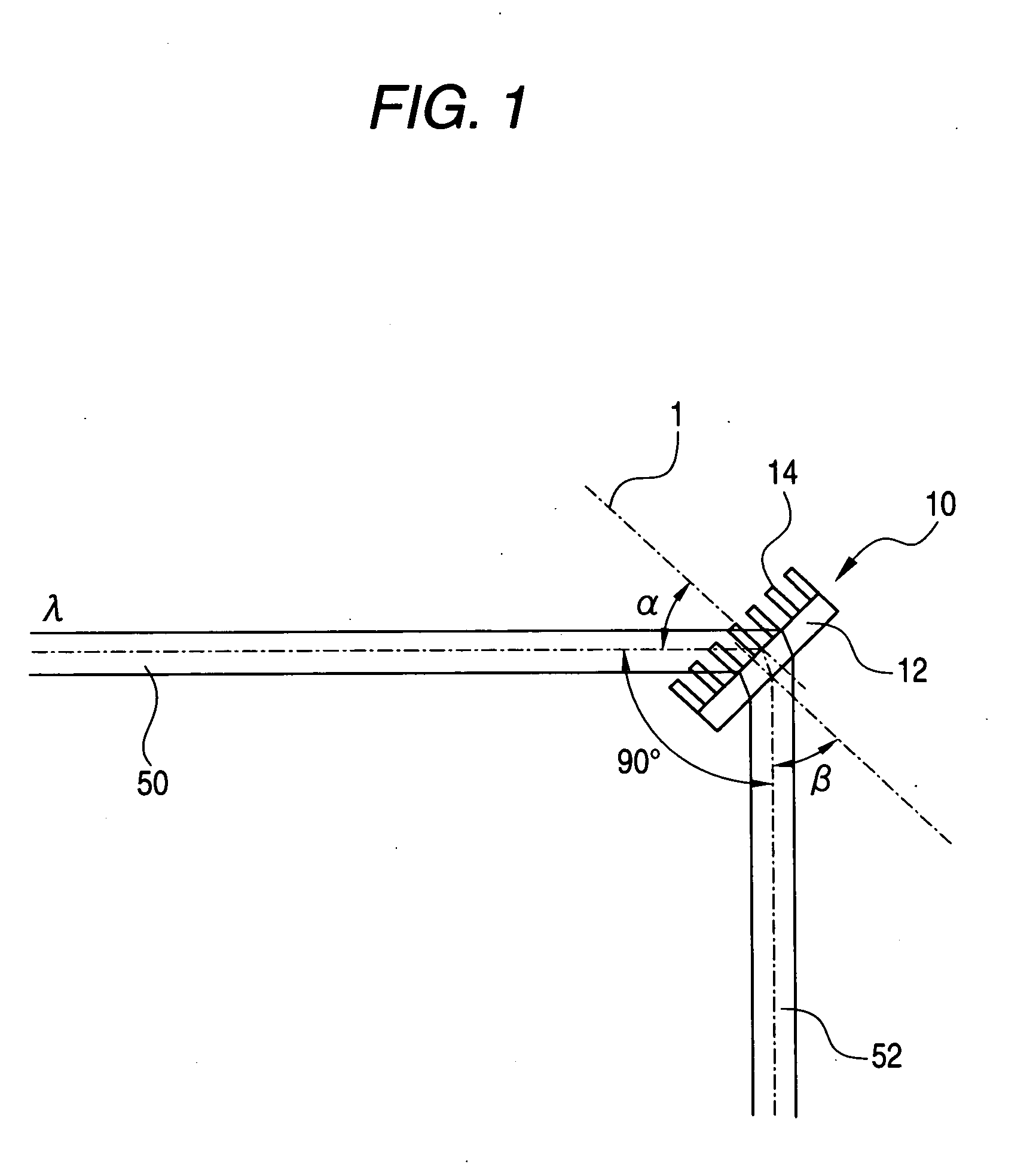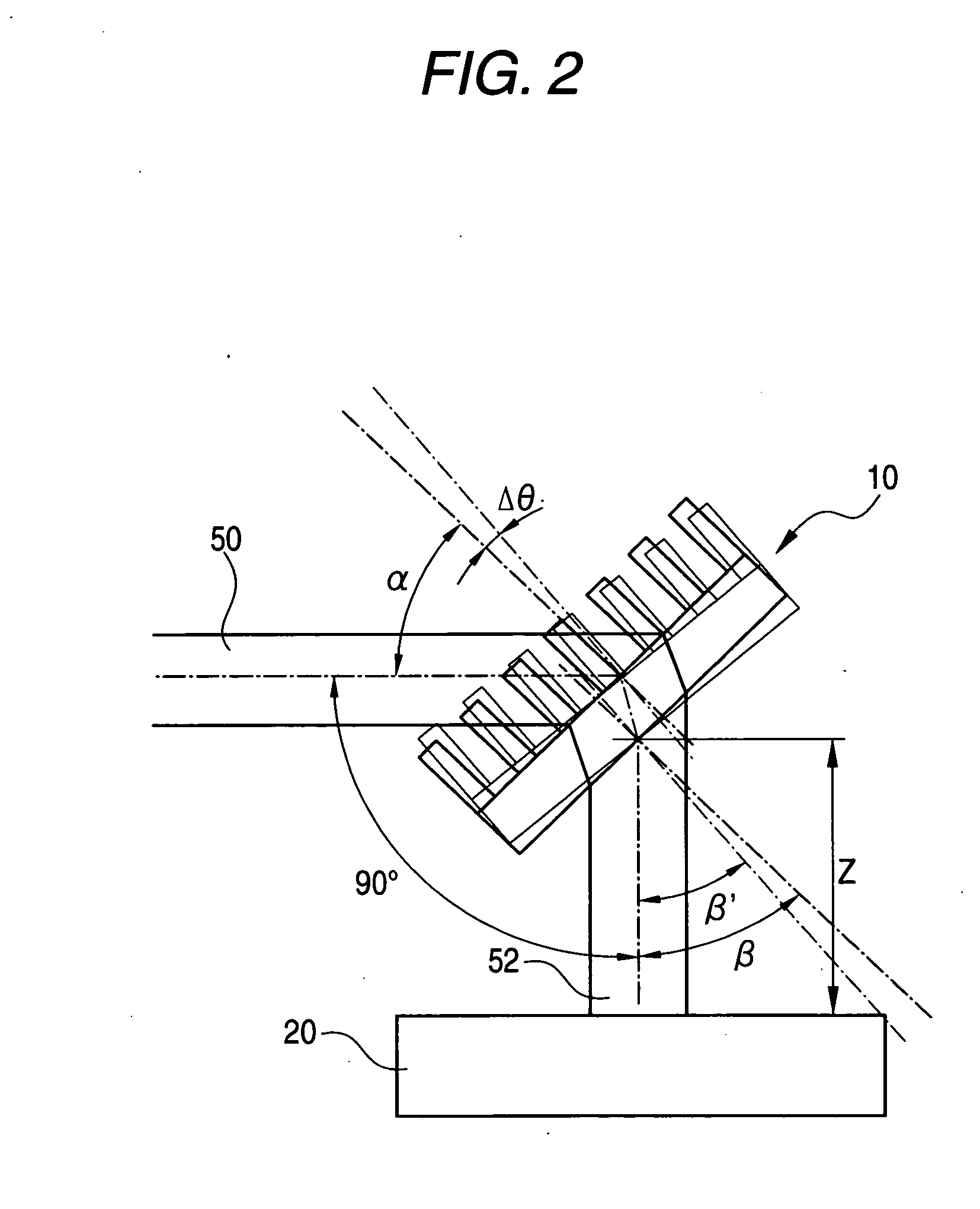Optical Module
a technology of optical modules and optical modules, applied in the field of optical modules, can solve the problems of increasing the size of the apparatus using the optical module, lowering the efficiency and adjustment difficulty, and reducing so as to simplify the assembling process, and reduce the size of the optical module
- Summary
- Abstract
- Description
- Claims
- Application Information
AI Technical Summary
Benefits of technology
Problems solved by technology
Method used
Image
Examples
example 1
[0101] In Example 1, a transmission-type diffraction grating is used for changing an optical path. As known well, the transmission-type diffraction grating has a spectral distributing function exhibiting different diffraction angles in accordance with wavelengths. Accordingly, an example using such a spectral distributing function in addition to the optical path changing will be described. FIG. 7 shows the case of Example 1 using the optical system according to the invention.
[0102] Example 1 shows a demultiplexing module including an optical fiber 160, a collimator lens 132, a transmission-type diffraction grating 110, a converging lens 130, and a photodetector array 120.
[0103] A planoconvex lens with a diameter of 4 mm and a focal length f of 7.96 mm with respect to a wavelength of 1550 nm is used as each of the collimator lens 132 and the converging lens 130. A deep-groove laminar diffraction grating having an effective area of 4×6 mm and having 900 grooves per mm is used as the...
example 2
[0108] Although the above description has been made on the case where a light demultiplexing module is formed, the same optical system as described above may be used for forming a light multiplexing module as shown in FIG. 8. As for the constituent members of the optical system, the photodetector array in FIG. 7 is replaced with a light-emitting element array.
[0109] In the light-emitting element array 270, four surface light-emitting semiconductor laser elements 272 each having an effective light-emitting surface with a diameter of 50 μm are arranged at intervals of 200 μm. The laser elements emit light beams with wavelengths of 1510 nm, 1530 nm, 1550 nm and 1570 nm respectively. The light beams 55 output from the laser elements 272 respectively are collimated to parallel light beams 56 approximately by a collimating lens 232. The parallel light beams 56 are incident at an incident angle of about 45° on a surface of the diffraction grating. The light beams with the wavelengths diff...
example 3
[0112]FIGS. 9 and 10 show Example 3 according to the invention.
[0113]FIG. 9 is a sectional view taken along the center axis of the optical module according to the invention. The light input device is a collimator having an optical fiber 350, and a collimator lens 330. Light output from an end surface of the optical fiber 350 is collimated to parallel light beams. The parallel light beams are made incident on the transmission-type diffraction grating 10. The collimator is held by a first holding member (collimator holding member) 335. The collimator holding member 335 is cylindrical so that the collimator lens 330 and a ferrule 360 for holding the optical fiber 350 are inserted and held in a hollow portion of the cylinder of the collimator holding member 335. The hollow portion is circular in section and forms an optical path of parallel light flux output from the collimator.
[0114] Light diffracted by the diffraction grating is converged on the photodetecting surface of the photode...
PUM
| Property | Measurement | Unit |
|---|---|---|
| inclination angle | aaaaa | aaaaa |
| optical path changing angle | aaaaa | aaaaa |
| bending angle | aaaaa | aaaaa |
Abstract
Description
Claims
Application Information
 Login to View More
Login to View More - R&D
- Intellectual Property
- Life Sciences
- Materials
- Tech Scout
- Unparalleled Data Quality
- Higher Quality Content
- 60% Fewer Hallucinations
Browse by: Latest US Patents, China's latest patents, Technical Efficacy Thesaurus, Application Domain, Technology Topic, Popular Technical Reports.
© 2025 PatSnap. All rights reserved.Legal|Privacy policy|Modern Slavery Act Transparency Statement|Sitemap|About US| Contact US: help@patsnap.com



